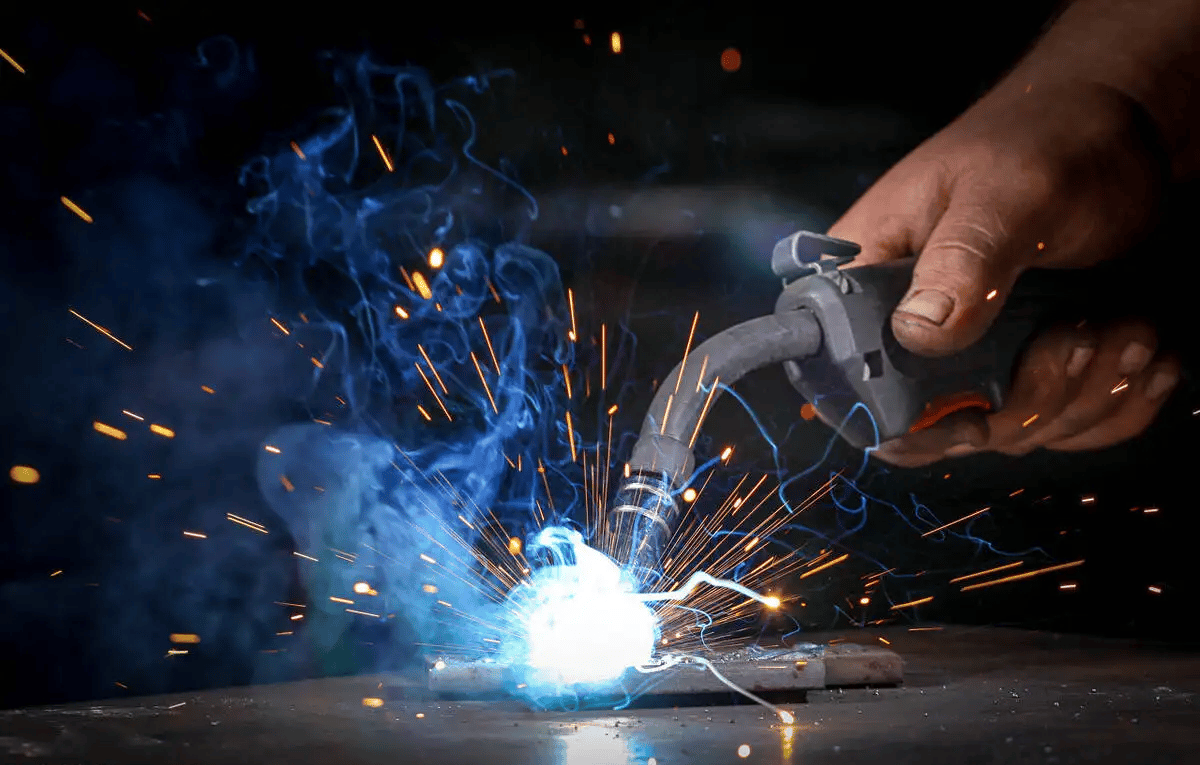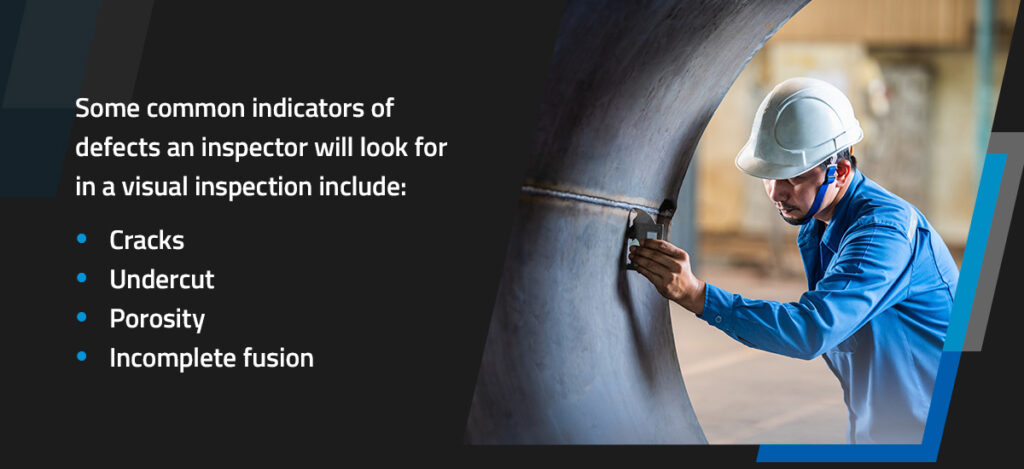Comprehending the Process of Welding Inspection Racine for Optimal Results
Comprehending the Process of Welding Inspection Racine for Optimal Results
Blog Article
Ingenious Strategies to Fillet Weld Inspection and Testing: Enhancing Weld High Quality and Compliance Standards
In the realm of welding, the high quality and integrity of fillet welds play a critical duty in guaranteeing the structural stability and dependability of different commercial components. With the consistent drive for boosted performance and conformity with stringent requirements, the exploration of cutting-edge approaches to fillet weld evaluation and testing has come to be critical.
Advanced Non-Destructive Screening Methods
Making use of cutting edge innovations, advanced non-destructive testing approaches play a crucial duty in making certain the stability and top quality of fillet welds. These methods, such as phased array ultrasonic screening (PAUT) and magnetic bit screening (MPT), deal detailed insights right into the weld's internal framework without causing any damages to the material. PAUT, as an example, utilizes several ultrasonic elements to evaluate the weld from various angles, supplying a thorough visualization of possible defects like absence of blend or fractures.
By utilizing these advanced non-destructive screening strategies, weld assessors can precisely analyze the high quality of fillet welds, ensuring conformity with market criteria and policies. The ability to detect defects early on not only improves weld high quality however additionally protects against pricey rework or failures in architectural integrity, underlining the importance of these ingenious screening approaches in welding inspections.
Robotics and Automation in Inspection
The integration of robotics and automation has actually transformed the inspection procedure for fillet welds, improving effectiveness and accuracy in top quality evaluation. Robotics supply accurate control and repeatability in examining welds, making certain trusted and constant results. Automated systems can be configured to follow specific evaluation courses, ensuring complete coverage of welds and decreasing the threat of human mistake.
Robotic assessment systems outfitted with innovative sensors can find and gauge weld attributes with high precision, supplying thorough information for analysis. These systems can recognize issues such as splits, absence of blend, and porosity, enabling prompt rehabilitative activities to be taken. Furthermore, robotics and automation permit real-time information collection and analysis, offering instant comments to operators and promoting quick decision-making procedures.
In addition, the use of robotics and automation in fillet weld assessment boosts overall performance by reducing evaluation times and increasing evaluation throughput. By enhancing the inspection procedure, manufacturers can guarantee weld high quality and compliance criteria are satisfied efficiently, eventually bring about cost savings and boosted item high quality.
Utilizing Artificial Knowledge for Analysis
Expert system plays a pivotal role in enhancing the performance and precision of analysis in fillet weld evaluation procedures. By utilizing the power of AI, inspectors can improve the analysis of weld high quality and compliance standards, leading to more dependable and exact outcomes. AI algorithms can quickly refine substantial quantities of information from weld inspections, discovering flaws or variances that might be challenging to relate to the naked eye. This advanced modern technology enables real-time surveillance of weld quality, allowing for immediate rehabilitative activities to be taken if any type of problems are detected.
Furthermore, AI systems can gain from previous assessment information, constantly boosting their capability to determine prospective issues and variances in fillet welds. This flexible discovering capacity enhances the overall quality assurance process, reducing the likelihood of human error and making sure that welds fulfill the required standards. By integrating expert system right into fillet weld evaluation, sectors can achieve greater degrees of efficiency, consistency, and conformity in their examination methods.
Portable Equipment for On-Site Assessment
 Enhancing field inspection effectiveness, the adoption of mobile tools changes on-site assessment procedures for fillet welds. These tools supply adaptability and convenience, allowing inspectors to carry out comprehensive assessments in various places, consisting of remote or difficult atmospheres. Portable devices such as ultrasonic screening tools, magnetic fragment inspection devices, and electronic radiography systems supply real-time information and high-resolution imaging capabilities, allowing quick decision-making and prompt responses on weld high quality.
Enhancing field inspection effectiveness, the adoption of mobile tools changes on-site assessment procedures for fillet welds. These tools supply adaptability and convenience, allowing inspectors to carry out comprehensive assessments in various places, consisting of remote or difficult atmospheres. Portable devices such as ultrasonic screening tools, magnetic fragment inspection devices, and electronic radiography systems supply real-time information and high-resolution imaging capabilities, allowing quick decision-making and prompt responses on weld high quality.One considerable advantage of mobile devices is their ability to streamline inspection treatments, reducing downtime and improving general productivity. Inspectors can easily deliver these tools to different job sites, Check Out Your URL getting rid of the need for delivering hefty machinery or elements to off-site centers. Furthermore, the portability of these devices promotes cost-effectiveness by lessening transport expenses and speeding up examination timelines.
In addition, the use of mobile devices for on-site inspection promotes proactive quality assurance procedures, as examiners can pop over to these guys without delay determine and resolve any potential welding issues or discrepancies. By integrating these cutting-edge innovations right into on-site evaluation techniques, welding professionals can make sure conformity with market standards and boost weld high quality, ultimately resulting in improved structural stability and security in different welding applications.
Combination of Data Monitoring Equipment
Having actually optimized on-site evaluation processes via the application of portable devices, the following stage entails the seamless assimilation of data monitoring systems to further enhance effectiveness and information evaluation abilities in fillet weld assessment and testing. Welding Inspection Racine. By incorporating information monitoring systems into the evaluation procedure, organizations can streamline information collection, storage space, and analysis. This integration enables real-time surveillance of weld quality, prompt identification of problems, and prompt decision-making to remedy any kind of problems that might develop during the inspection procedure
Information monitoring systems play an important function in centralizing assessment information, facilitating simple access for licensed workers, and making certain information integrity and safety and security. Through the integration of these systems, inspectors can generate thorough records, track historical information for trend evaluation, and improve total procedure efficiency. The assimilation of information administration systems makes it possible for smooth interaction between various stakeholders entailed in the assessment procedure, cultivating cooperation and boosting general quality control measures. Inevitably, the combination of information management systems serves to boost the criteria of fillet weld evaluation and screening, making sure conformity with market guidelines and boosting weld quality.
Conclusion
Finally, innovative approaches to fillet weld inspection and screening have significantly enhanced weld top quality and compliance helpful resources requirements. Advanced non-destructive testing methods, robotics, automation, expert system, portable tools, and data administration systems have actually revolutionized the way weld examinations are conducted. By utilizing these technologies, industries can make sure that welds satisfy the required top quality criteria and policies, inevitably boosting overall effectiveness and safety and security in welding processes.

By using these sophisticated non-destructive testing strategies, weld assessors can precisely analyze the top quality of fillet welds, making sure compliance with industry requirements and laws. Mobile tools such as ultrasonic testing tools, magnetic fragment assessment devices, and electronic radiography systems give real-time information and high-resolution imaging abilities, making it possible for quick decision-making and prompt feedback on weld high quality.
Having enhanced on-site evaluation processes through the usage of mobile devices, the following stage includes the seamless combination of data monitoring systems to additionally boost efficiency and information analysis capabilities in fillet weld evaluation and testing (Welding Inspection Racine). Inevitably, the assimilation of information monitoring systems serves to boost the criteria of fillet weld inspection and screening, ensuring conformity with industry laws and improving weld top quality
 In final thought, innovative techniques to fillet weld assessment and screening have actually considerably boosted weld high quality and conformity requirements.
In final thought, innovative techniques to fillet weld assessment and screening have actually considerably boosted weld high quality and conformity requirements.Report this page